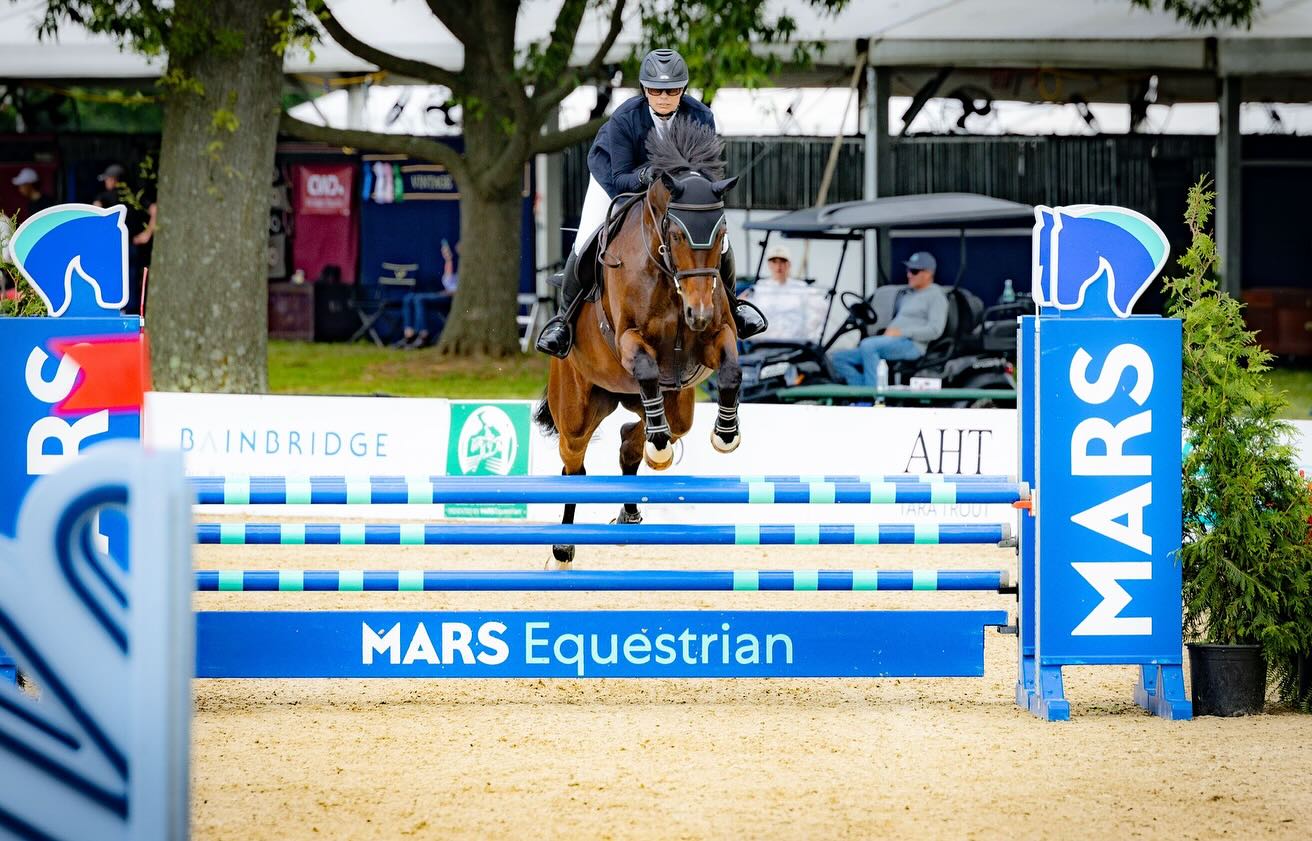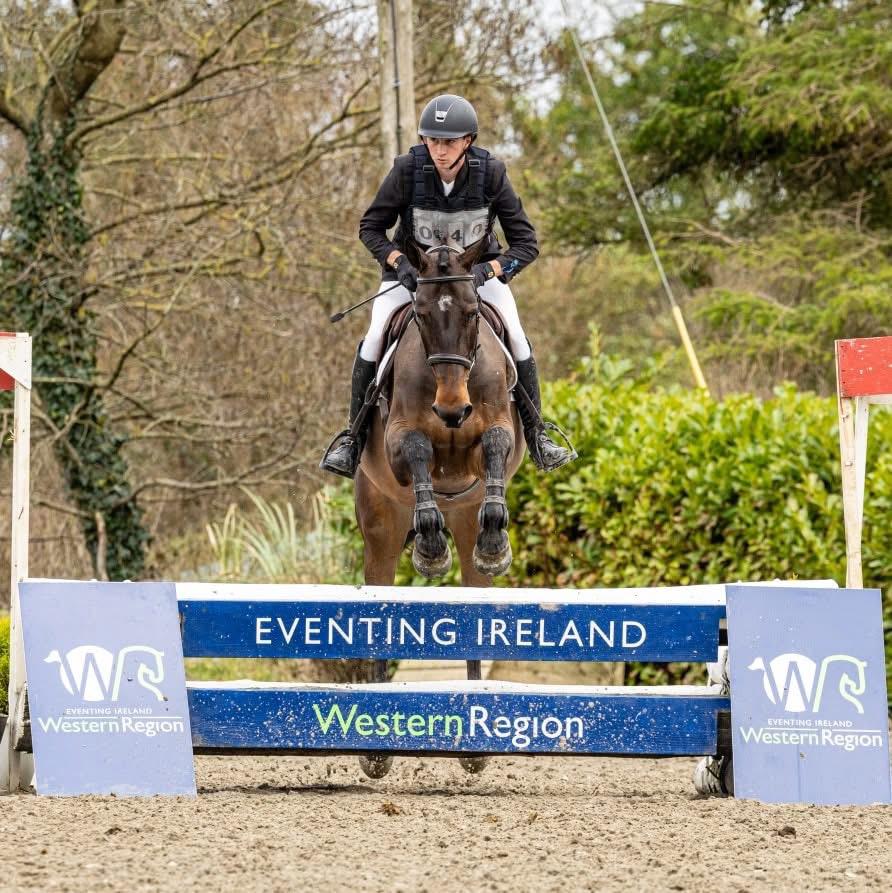If you have ever worked with David, you’ll find yourself occasionally waking up at night saying 4 words: direction, speed, rhythm, and balance. Cyrena, an EN reader, attended one of David’s clinics this week and was kind enough to send us a report. Thank you very much for writing this Cyrena, and thank you for reading.
—-
From Cyrena:
Hey EN!
Earlier this week, I participated in an eventing clinic with David O’Connor at the Colorado Horse Park and I wanted to tell you all about it. First off, let me say what I was impressed with the most was what a great instructor he was. I’ve participated in several clinics with big names in the past, and while they were all very fun and educational, David brought that little extra something that no one else has yet. So if you get a chance to take part in one of his clinics, regardless of your discipline, I can’t recommend it enough.
The clinic was August 9-10 at the Colorado Horse Park. It started out very rough for me. I had some serious trailer loading issues (more like trailer refusing issues) with my OTTB and ended up having to borrow my neighbor’s OTTB at the very last minute. I didn’t want to waste this amazing opportunity but I was slightly disheartened that I couldn’t bring the horse I had planned to. I knew this would be great exposure for him and in the past, while the rider gets a lot from the clinics, I always felt the benefit went slightly more to the horse. But I ignored those feelings and aimed to get the most out of this time as I could.
I participated in the Novice level session and realized in the first 15 minutes that I was not as fit as I thought I was. How could this be? I ride several times a week, I feel fit. But after what felt like 30 minutes (honestly more like 10 minutes) of trotting and cantering in a circle in two point and half seat having David O’Connor yell at you repeatedly to get your rear out of the saddle, I realized I had some homework to do. And then the real work began.
The central theme of the clinic was “Rider Responsibilities,” which are direction, speed, rhythm, and balance of the ride. It is the sole responsibility of the rider to plan and execute the direction, speed, rhythm, and balance of the horse at all times, whether you are hacking, jumping, or on XC. After cantering a line and putting 8 strides between the fences the first time and nine the second, David asked me why the difference? I had no answer, which means I didn’t have a plan, I didn’t execute it, the horse decided the speed and that is my responsibility, not theirs. So much for the horse getting the majority of the benefit at these clinics. David told us things we can use and apply on any horse, because they are solely our responsibilities. He really helped me to trust my horse, to relinquish some control that is proactive and instead only be reactive when necessary. At the end of the lesson, I thanked him and said, “Even though I wasn’t on the horse I wanted to be on, I know I can apply what I’ve learned today because they are very similar horses,” and then I paused, and said, “I mean, because I ride them the same.” He smiled and said, “Exactly.”
David went into more detail on this topic in the evening during a reception. He explained that American riders are at a major disadvantage around the world because we lack theory, and that is a major strength in other countries. He encouraged us to educate ourselves by going to the library and even looking on the internet for information about theory. Horses have been thinking the same way for hundreds of years, their responsibilities have not changed, so we can pick up a 400 yr old book and still learn something valuable. He also discussed the lack of communication between the disciplines. Hunters think eventers are crazy, eventers think steeplechase riders are crazy, western thinks all English riders are crazy… it’s unnecessary. We all have the same responsibilities, we all ride horses, and we are all lacking theory.
The next day was my personal favorite, cross country. David lectured us the night before about our galloping position, preparation position, jumping position, and drop position. He warned us that he would find the biggest hill he could find and shove us off it to practice the drop position, and he didn’t disappoint. We got to practice all the fun stuff and personally, he really helped my confidence, the confidence in my horse, and again to remember the rider responsibilities which need to be in our mind at all times. I was really impressed to see one horse that did not want to go into the water, not even walk through, 30 minutes later jumping down a bank into the pond, cantering though, and jumping out.
The entire clinic was so controlled, calm, and great fun. It was a great experience for everyone and everyone who participated will be a better equestrian in the end. When I leave a lesson, I want to feel like I learned something new, I want to get more than being reminded to keep my heels down or shoulders back. I want someone to explain the things I “know” in a way I haven’t heard before. I want someone to take my understanding to the next level, have some type of equestrian epiphany, and that’s exactly what we got.




















